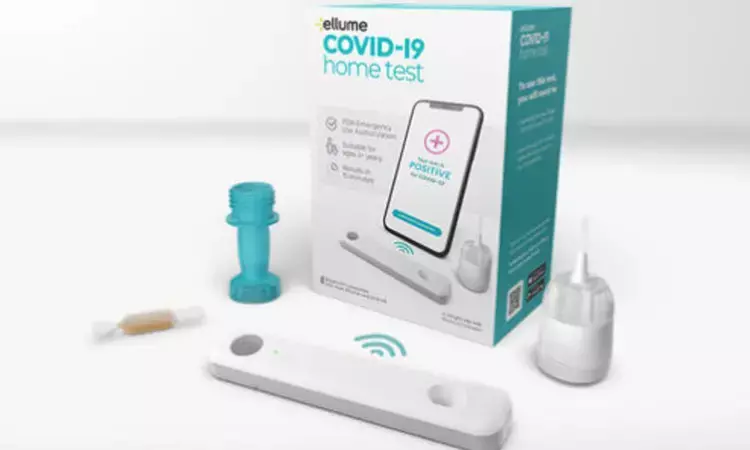- Home
- Medical news & Guidelines
- Anesthesiology
- Cardiology and CTVS
- Critical Care
- Dentistry
- Dermatology
- Diabetes and Endocrinology
- ENT
- Gastroenterology
- Medicine
- Nephrology
- Neurology
- Obstretics-Gynaecology
- Oncology
- Ophthalmology
- Orthopaedics
- Pediatrics-Neonatology
- Psychiatry
- Pulmonology
- Radiology
- Surgery
- Urology
- Laboratory Medicine
- Diet
- Nursing
- Paramedical
- Physiotherapy
- Health news
- Fact Check
- Bone Health Fact Check
- Brain Health Fact Check
- Cancer Related Fact Check
- Child Care Fact Check
- Dental and oral health fact check
- Diabetes and metabolic health fact check
- Diet and Nutrition Fact Check
- Eye and ENT Care Fact Check
- Fitness fact check
- Gut health fact check
- Heart health fact check
- Kidney health fact check
- Medical education fact check
- Men's health fact check
- Respiratory fact check
- Skin and hair care fact check
- Vaccine and Immunization fact check
- Women's health fact check
- AYUSH
- State News
- Andaman and Nicobar Islands
- Andhra Pradesh
- Arunachal Pradesh
- Assam
- Bihar
- Chandigarh
- Chattisgarh
- Dadra and Nagar Haveli
- Daman and Diu
- Delhi
- Goa
- Gujarat
- Haryana
- Himachal Pradesh
- Jammu & Kashmir
- Jharkhand
- Karnataka
- Kerala
- Ladakh
- Lakshadweep
- Madhya Pradesh
- Maharashtra
- Manipur
- Meghalaya
- Mizoram
- Nagaland
- Odisha
- Puducherry
- Punjab
- Rajasthan
- Sikkim
- Tamil Nadu
- Telangana
- Tripura
- Uttar Pradesh
- Uttrakhand
- West Bengal
- Medical Education
- Industry
Olfactory dysfunction evaluation helpful in diagnosis of COVID 19, Finds study

Researchers have recently found out a new olfactory dysfunction rapid test by the name Clinical Olfactory Dysfunction Assessment (CODA) that makes use of paper strips and essential oils will be useful for the diagnosis of the COVID-19 virus.
The report has been published in the JAMA Otolaryngology-Head and Neck Surgery.
Dr. Charles Villerabel from the University of Montpellier told Reuters Health by email that the study confirms that Olfactory dysfunction has high prevalence in COVID-19 (one out of three patients), and the follow-up shows a significant proportion of patients for whom recovery is late or incomplete.
According to the author, the prospective diagnostic study was conducted in a COVID-19 screening center at a university hospital in France from March 23 to April 22, 2020. A total of 809 healthcare workers or outpatients with symptoms or with close contact with an index case were enrolled in the study. The mean age was 42 years and close to two-thirds were women.
All participants were made to undergo the CODA assessment, in which participants identified and rated the intensity of three scents - lavender, lemongrass, and mint to achieve a summed score ranging from 0 to 6 (lower score meant smells not recognized and/or lower intensities detected). COVID-19 status was assessed using RT-PCR test.
The following results were observed-
a. Fifty-eight patients (7.2%) tested positive for SARS-CoV-2.
b. Chemosensory dysfunction was reported by 34.5% of those with COVID-19 versus 3.9% who tested negative.
c. Olfactory dysfunction, either self-reported or clinically ascertained (CODA score, 3 or less), yielded similar sensitivity (0.31 vs. 0.34) and specificity (0.97 vs. 0.98) for a COVID-19 diagnosis, with high concordance.
d. Fifteen of 19 participants (78.9%) with both reported olfactory dysfunction and a CODA score of 3 or less were confirmed to have COVID-19.
e. The CODA score also revealed five participants (26.3%) with confirmed COVID-19 who had previously unperceived olfactory dysfunction.
f. However, 14 patients with a CODA score of 3 or less also tested negative for COVID-19.
Therefore, it was concluded that "patients suspected of having COVID 19 should, at a minimum, be questioned about their sense of smell as a first line of assessment."
The study confirms the strong specificity of the evaluation of olfactory dysfunction in the diagnosis of COVID 19, by the patient interview and by a psychophysical test, the author further added.
Dr. Nandita Mohan is a practicing pediatric dentist with more than 5 years of clinical work experience. Along with this, she is equally interested in keeping herself up to date about the latest developments in the field of medicine and dentistry which is the driving force for her to be in association with Medical Dialogues. She also has her name attached with many publications; both national and international. She has pursued her BDS from Rajiv Gandhi University of Health Sciences, Bangalore and later went to enter her dream specialty (MDS) in the Department of Pedodontics and Preventive Dentistry from Pt. B.D. Sharma University of Health Sciences. Through all the years of experience, her core interest in learning something new has never stopped. She can be contacted at editorial@medicaldialogues.in. Contact no. 011-43720751
Dr Kamal Kant Kohli-MBBS, DTCD- a chest specialist with more than 30 years of practice and a flair for writing clinical articles, Dr Kamal Kant Kohli joined Medical Dialogues as a Chief Editor of Medical News. Besides writing articles, as an editor, he proofreads and verifies all the medical content published on Medical Dialogues including those coming from journals, studies,medical conferences,guidelines etc. Email: drkohli@medicaldialogues.in. Contact no. 011-43720751


